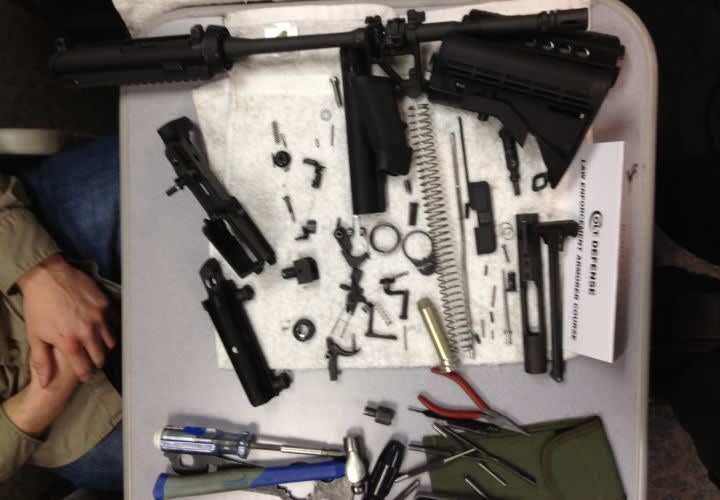The course begins with the basics of the M4, including proper nomenclature, function, and cycle of firing. From there you progress into a PowerPoint presentation on how to properly disassemble the rifle. The PowerPoint gives you a big-picture view of this process and matches your manual page for page. The illustrations and images in the book are excellent; the book is worth the price of admission.
Pay attention to what Dean or the other instructors pass along that's not in the book; they're passing along suggestions that will help you as you assemble or take apart the weapon. By the end of the class. you'll be familiar with all the pins, screws, springs, ball bearings, and flaps.
The Colt armorer class teaches you how to make repairs and upgrades to commonly damaged parts or parts that fail from daily wear and tear, including the gas tube. You will not learn how to remove the barrel, barrel nut, or front sight. These parts generally don't wear out from normal use, and if you need to replace them, it's usually due to a catastrophic incident. Send the rifle to the manufacturer.
This course is so complete that you learn to repair and maintain all the springs and bearings in the A3 rear sight. With red dots and flip-up, back-up sights, I’d like to see this portion of the course deleted. It's more cost effective to simply replace the sight with one of Magpul's sights. The course will teach you how to replace the bolt rings, extractor, and its springs; how to properly replace the buffer tube (receiver extension); and how to install the fire-control parts. You'll also learn to recognize when parts have been installed parts improperly.
The instructor advises that you maintain a work area with a clean bright floor or counter top. This will help you to find those pesky small springs when they get dropped or fly out when you forget they're under tension. You will also quickly learn which of these pesky little parts you should have extras of. They do get lost. Many of these parts also wear out from use and improper maintenance by officers who may think they know how to fix it.












